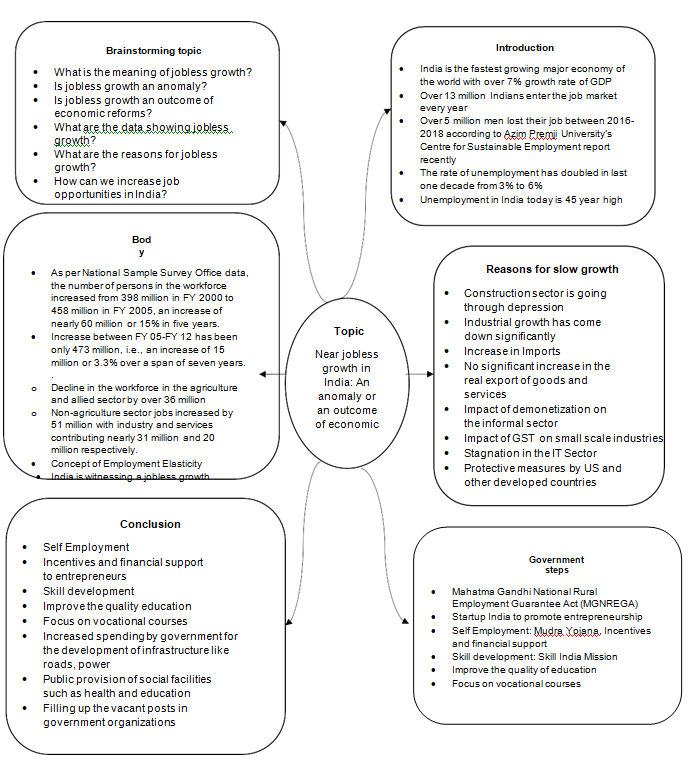Essay and Answer Writing → Model Essays
Topics
All
Civil Services in India (26)
Ethics, Integrity and Aptitude
» Chapters from Book (11)
» Case Studies (8)
Solved Ethics Papers
» CSE - 2013 (18)
» CSE - 2014 (19)
» CSE - 2015 (17)
» CSE - 2016 (18)
» CSE - 2017 (19)
» CSE - 2018 (19)
» CSE - 2019 (19)
» CSE - 2020 (19)
» CSE - 2021 (19)
» CSE -2022 (17)
» CSE-2023 (17)
Essay and Answer Writing
» Quotes (34)
» Moral Stories (18)
» Anecdotes (11)
» Beautiful Poems (10)
» Chapters from Book (5)
» UPSC Essays (40)
» Model Essays (38)
» Research and Studies (4)
Economics (NCERT) Notes
» Class IX (14)
» Class X (16)
» Class XI (55)
» Class XII (53)
Economics Current (51)
International Affairs (20)
Polity and Governance (61)
Misc (77)
Select Topic »

Civil Services in India (26)
Ethics, Integrity and Aptitude (-)
» Chapters from Book (11)
» Case Studies (8)
Solved Ethics Papers (-)
» CSE - 2013 (18)
» CSE - 2014 (19)
» CSE - 2015 (17)
» CSE - 2016 (18)
» CSE - 2017 (19)
» CSE - 2018 (19)
» CSE - 2019 (19)
» CSE - 2020 (19)
» CSE - 2021 (19)
» CSE -2022 (17)
» CSE-2023 (17)
Essay and Answer Writing (-)
» Quotes (34)
» Moral Stories (18)
» Anecdotes (11)
» Beautiful Poems (10)
» Chapters from Book (5)
» UPSC Essays (40)
» Model Essays (38)
» Research and Studies (4)
Economics (NCERT) Notes (-)
» Class IX (14)
» Class X (16)
» Class XI (55)
» Class XII (53)
Economics Current (51)
International Affairs (20)
Polity and Governance (61)
Misc (77)

Near jobless growth in India: An anomaly or an outcome of economic reforms

India is one of the fastest growing major economies of the world, registering an annual GDP growth rate of over 7% in the last couple of years. However, the growth of economy has not been able to keep pace with the requirement of jobs in India. Due to increased focus on education, there has been substantial increase in the number of people getting higher education and seeking jobs. Over 13 million people are entering the job market every year. However, instead of additional jobs being created, there seems to be loss of jobs. The rate of unemployment in FY18 was at a 45-year high, doubling from 3% to 6% in a decade, and hit a 3-year-high of 8.4 per cent in August 2019, despite Indian being among the fastest growing economies. It, therefore, appears that India is undergoing jobless growth, which is a situation where in the overall economy shows an expansion but the number of jobs created is very less or nil in comparison to the growth rate of the overall economy.
The trend of jobless growth has been visible for quite some time. As per National Sample Survey Office data, the number of persons in the workforce increased from 398 million in FY 2000 to 458 million in FY 2005, an increase of nearly 60 million or 15% in five years. However, between FY-05 to FY12, there has been decline in the workforce in the agriculture and allied sector by over 36 million while the non- agriculture sector jobs increased by 51 million. Thus, the increase between FY 05-FY 12 has been only 473 million, i.e., an increase of 15 million or 3.3% over a span of seven years. The situation has become worse in recent years as over 5 million men lost their jobs between 2016 and 2018 according to a report by Azim Premji University Centre for Sustainable Employment.
The problem of rising unemployment has baffled the government and economists alike. It is an irony that the number of job seekers is increasing every year due to better educational facilities in India, but the job opportunities are declining. Some experts believe that the jobless growth is the result of the economic reforms by which India opened its market to the foreign companies and adopted liberal import policies. This has led to the closure of many local industries causing huge unemployment. Some experts believe that the high rate of unemployment is due to some fault in data collection process in India. Almost 90% of the jobs in India are in the unorganized sector and the data collection mechanism does not appropriately include jobs of unorganized sector in its surveys. The unemployment data thus can’t be relied upon because the employment data of casual labourers, roadside vendors, contract labourers who are not shown on the rolls of firms are not properly accounted for in the jobs data. Some experts also try to point out the phenomenon of jobless growth as an anomaly. At least part of the growth may be a result of growth in commodity prices, productivity or a boom in the stock market evaluations, increase in the real estate prices, etc., which is not leading to the actual growth in supplies.
It is also erroneous to assume that the growth of economy would automatically lead to the growth of employment due to employment elasticity, which is a measure of the percentage change in employment associated with a unit change in economic growth, i.e. GDP. It indicates the ability of an economy to generate employment opportunities for its population per cent of its growth process. Despite good growth, the employment elasticity in India declined from 0.44 in the first half of the decade 1999-2000 to 2004-05, to as low as 0.01 during second half of the decade 2004–05 to 2009–10. Hence, high growth is a necessary but not a sufficient condition for increasing employment in a country.
There are many reasons for the jobless growth witnessed in India. The increased use of information technology and automation has led to increased productivity in businesses with fewer people being employed. Due to the stringent labour laws in India, companies avoid employing labour directly in their payroll and prefer to hire them from third parties, thus not reflecting their status in the job data. Growth of export has been slow in the last few years which has further reduced the employment opportunities in India. On the other side, the rapid increase of imports has led to the closure of many domestic companies and a rise in unemployment. In recent years, the industrial growth has come down significantly impacting the new job creation. The construction sector which has high employment electricity and large potential to create jobs is reeling under depression for the last few years. There is stagnation in the IT Sector due to the protective measures by US and other developed countries.
It is also largely believed that the demonetization carried out in November 2016 has caused negative impact on the informal sector. Since almost 90% of the people in India are employed in the informal sector, there has been a huge loss of job there. It is also believed that the Goods and Service Sector Tax (GST) has adversely impacted the small and medium enterprises due to higher cost of compliance and the reduction of exemption limits provided to the manufacturers. Another reason for the lack of job creation in India is the poor quality of education and lack of skill among most of the educated youth. The protest and social movements against large industries like TATA or POSCO have created negative sentiments in the businesses, which has slowed down investment in the manufacturing sector.
The rapid growth of technology seems to be responsible for the increase of the productivity as well as loss of jobs. When technology is stagnant, the growth of income is usually in proportion to the growth in job opportunities. However, the modern world is witnessing an exponential growth of information and communication technologies which has helped the corporates to be more efficient. They are able to provide more output without adding any manpower and sometimes high growth is achieved with significant less number of employees. Automation and use of robotics in manufacturing sectors have also led to the loss of jobs despite improvement in the productivity. The emergence of Artificial Intelligence, Machine Learning and Data Mining tools have helped the business to do many tasks using technological tools which were earlier done by the human beings. Hence, while productivity is increasing every year, the jobs are not increasing.
It would not be appropriate to blame economic reforms for the jobless growth since a significant number of new jobs has been created in many sectors like IT and consultancy due to liberalization and globalisation. India today is able to produce top quality products with the aid of latest technical know- how and the presence of numerous multi-national companies. However, the nature of jobs has changed significantly. We can’t hope to get low-skill jobs now due to rapid automation and use of AI.
We have to provide better education and training to people in India so that they can get new jobs. Significant reskilling and upskilling is required for the existing manpower to make them suitable for the new world. There is also a need for promoting self-employment and entrepreneurship to create many more jobs. There has to be significant increase in the spending by government for the development of infrastructure like roads, power, education, healthcare, etc., to create the ecosystem for growth in economy and creation of new jobs. Government has to further reform its policies to enhance economic growth and job creation. Increased expenditure for providing social facilities such as health and education may enhance job opportunities as well as help better development of social infrastructures. There are also a large number of vacancies in the government organizations, which can be filled expeditiously along with creation of more jobs.

Looking for a One-stop Solution to prepare for ‘Ethics, Integrity, and Aptitude’ and ‘Essay and Answer Writing’ for UPSC?
Buy Dr. Awdhesh Singh’s books from the links below-
Buy Dr. Awdhesh Singh’s books from the links below-
Ethics, Integrity & Aptitude for Civil Services Examination
Amazon - https://amzn.to/3s1Qz7v
Flipkart - https://bit.ly/358N2uY
Mastering Essay & Answer Writing for UPSC Civil Services
Amazon - https://amzn.to/3JELE2h
Flipkart - https://bit.ly/3gVIwmv
| Related Articles |
| Recent Articles |
